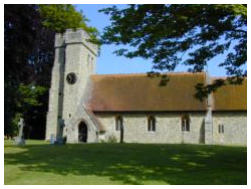


Aston Abbotts today is a far cry from the self-supporting agricultural community
described on the history page of this website. Although much of the surrounding land is
still farmed, the growth of mechanised farming methods has left few people directly
involved within the industry. A modern-day Astonian could still be a farmer, but more
likely might be a commuter travelling to Aylesbury, Leighton Buzzard or even
London. People from all walks of life live in Aston Abbotts.
Although modern-day Aston Abbotts has a rich cosmopolitan mix of people there are
signs of its farming roots everywhere. Many of the farms still exist, though absentee
landlords now hold some of the land. Other farms have long since been lost, with
only their names remaining: Nash's Farm is now a small courtyard development of
modern houses built in the 1990s. Home Farm is now a sympathetically restored
farmhouse home, but separated from its original lands. Longmoor Farm is
residential, with the old barns also having undergone residential conversion. Church
Farm has a helipad. The central part of the village is now a Conservation Area.
The growth of car ownership in the last century coupled with a desire of professional
townspeople to escape the hurly-burly of town life for a real or imagined rural idyll
have caused many commuters to swell the population of Bucks villages. Some of
these have settled in Aston Abbotts. As described on the history page the village has
changed dramatically in the last century but never more so than in the last few
decades. These saw a gradual but relentless erosion of traditional rural village life,
with farms being sold, land being redeveloped for residential purposes and village
facilities like the bakery and Post Office closing.


Much of the housing is located around a small rectangle of roads called the Green, in
the centre of the village. More houses are located along the three roads that lead out
from the centre of the village. Just north of The Green stands St James Church,
which was extensively rebuilt around 1865.
There are a wide variety of houses in Aston Abbotts. Much of the
village was rebuilt in the 19th century but some older dwellings
remain, including several thatched properties. Many of these
older properties have undergone extensive and sympathetic and
restoration in recent years. At one edge of The Green iron gates
mark the entrance to a fine large house called The Abbey. This is
probably the site of the Bishop of St Albans residence nearly
1000 years ago, but the current house on the site is perhaps 200
years old.
Over the last century just about every gap between the older
buildings has been filled with more modern property. These vary
from small bungalows to large detached houses.
A 1989 proposal to create low-cost housing in the village
affordable by villager’s grown-up children caused some
controversy.
In the 1990s the central part of the village was designated a conservation area.
This provides for tighter controls on development within this part of the village and
seeks to retain the original village character.

The Abbey - Aston Abbotts - pictured in 2001


- Photos
- Aston Abbotts - Winter Pictures
- Aston Abbotts How It Was
- Villagers Pictures - General
- Villagers Pictures - Ken Rhodie
- 630 Club Bean Competition 2011
- Astonbury X 2011 - Page 1
- Astonbury X 2011 - Page 2
- Astonbury X 2011 - Page 3
- Vic Scott Memorial Orchard
- Christmas Lunch 2011
- Peter Kent's Photographs
- Jubilee Picnic 2012
- Village Orchard - One Year On
- Village Orchard - Autum 2012 Planting
- Astonbury 2012
- Videos
- Interviews











